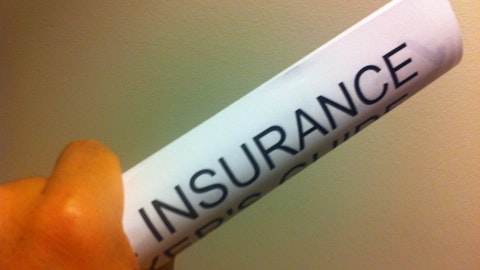Tom Wilson : Elyse, let me start macro and then ask Jesse to maybe dig in even a little more. I know you spend a lot of time on capital, so we can help you show you what we believe to be true. First, we have a long history of proactive managing capital, whether that’s how we deploy it at the individual risk level or what we do with different investments, as Jesse talked about, whether it’s selling businesses like life and annuities or using alternative capital like reinsurance or cat bonds or providing cash to shareholders through dividends and share repurchases. As you point out, I think if you look at the Q, we bought back about $37 billion of stock since we went public. And so that’s because we’re — we got good math, which Jesse will talk about, and we do a proactively.
I think the suspending the share repurchase we just sound judgment. If you’re not making money, don’t buy shares back. It’s really not a lot more complicated than that. I mean, it obviously helps you preserve capital, but just sort of good logic always serves the right kind of capital plan, which is you got to make money to be buying shares back. Jesse, do you want to talk about maybe give at least some more specifics on this whole capital?
Jesse Merten : Yes. Good morning, Elyse. I think to build on Tom’s point, and I think it’s easiest to just think about not the specific question, but more how we think about capital management more broadly. So you focus as many others do on RBC. RBC is a great measure for insurance companies, it’s common. We look at it as well. So we certainly understand why there’s a focus at times on RBC. It’s a measure that served the industry well in good times and in bad times. But I think as you know, RBC has some limitations. So we use it as an input in our capital management process, but not a primary driver, right? RBC is focused on statutory legal entities, but it doesn’t incorporate the risk across the enterprise or correlation in those types of risks. It doesn’t include sources of capital outside of regulated entities. Protection plans would be an example there. But those aspects are important to our overall capital management framework.
eyes: Now that capital is all available to us and our comprehensive and more precise capital management framework considers those facets. So — and I think it’s important to go back to really how we’re managing capital through what we consider to be a very detailed and sophisticated economic capital framework that quantifies enterprise risk and establishes our targets. As we’ve talked, that includes inputs from regulatory capital models, rating agencies and then our own risk models to help to quantify stress events, and we built those models really off of their risk models that are used to regulate banks. We feel very good about the output of our overall economic capital model. So we use that then as we’ve discussed, to determine a level of base capital that we need to operate our business while continuing to meet customer needs and amounts that are well above triggering any regulatory involvement.
So you’ve got base capital. On top of that, we hold stress capital for unexpected on frequent outcomes. And then we have a contingent reserve that we use and included in our target capital range, that’s really meant to incorporate extreme stress events, extreme low frequency events and just basically things that are beyond the standard probabilities that we apply to our stressed capital calculations. So high catastrophes this quarter used some of the contingent capital reserve, but we continue to hold stress capital that’s above our base capital level, and we remain confident in our capital position and our ability to execute on strategy, we look ahead. I think your question gets to the future, right? So I wanted to build a base for reminding everyone how we think about it.
But as we look to the future, it’s more than just a question of the buybacks, it’s what is their capital perspective look like. And we continue to believe we’re well capitalized even if it takes longer than we expect to get auto profitability back to targeted levels and even if catastrophes come in at more expected levels, for the rest of the year in 2023. Even at more normal levels of catastrophes for the rest of the year, 2023 will be the highest year for catastrophe losses on a pure dollar basis in about 25 years. So it’s a high cap quarter. We continue to feel good about capital, liquidity is not an issue, as we’ve talked about. We have a strong source of cash through interest payments and maturities that come over the next 12 months, and we have about $5 billion that comes off the portfolio that selling everything in the next 12 months, and we have a highly liquid investment portfolio.





